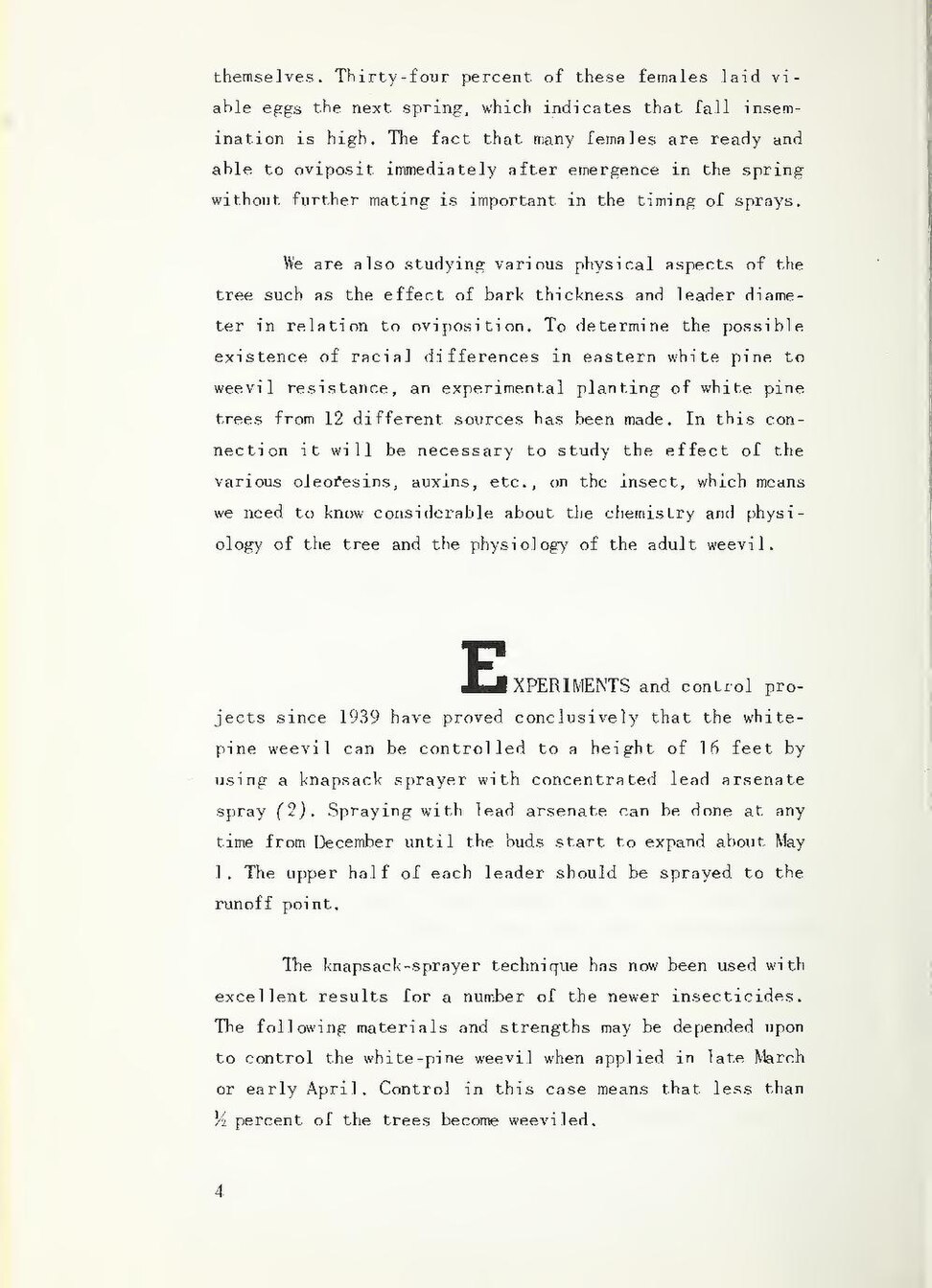themselves. Thirty-four percent of these females laid viable eggs the next spring, which indicates that fall insemination is high. The fact that many females are ready and able to oviposit immediately after emergence in the spring without further mating is important in the timing of sprays.
We are also studying various physical aspects of the tree such as the effect of bark thickness and leader diameter in relation to oviposition. To determine the possible existence of racial differences in eastern white pine to weevil resistance, an experimental planting of white pine trees from 12 different sources has been made. In this connection it will be necessary to study the effect of the various oleoresins, auxins, etc., on the insect, which means we need to know considerable about the chemistry and physiology of the tree and the physiology of the adult weevil.
EXPERIMENTS and control projects since 1939 have proved conclusive]y that the white-pine weevil can be controlled to a height of 16 feet by using knapsack sprayer with concentrated lead arsenate spray (2). Spraying with lead arsenate can be done at any time from December until the buds start to expand about May 1. The upper half of each leader should be sprayed to the runoff point.
The knapsack-sprayer technique has now been used with excellent results for a number of the newer insecticides. The following materials and strengths may be depended upon to control the white-pine weevil when applied in late March or early April. Control in this case means that less than ½ percent of the trees become weeviled.
